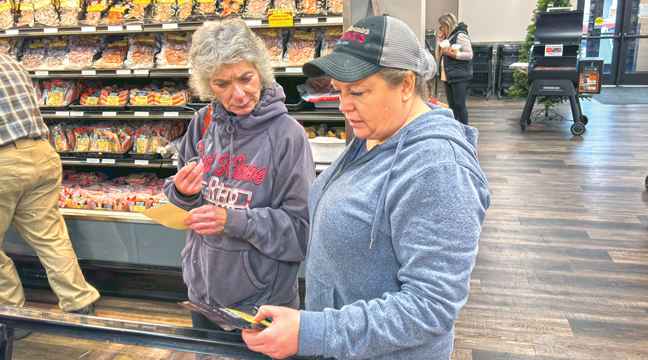(Editors note: The following is the second in a series on sites in Italy, visited by our 25-member mostly-Minnesota group, led by Naturalist Jim and Sandy Gilbert, in October.)
God (with perhaps some help from Mother Nature) created the Grand Canyon.
The Romans (with nobody elses’ help) created their city.
Our touring group had the opportunity to rub elbows with the Romans’ work of centuries past in a two-day tour of their ruins, smack-dab in the middle of Rome.
We walked past the Tower of Constantine, designed in 315 AD, while glimpsing over our shoulder at the hulking Coliseum.
Another Arch - that of Triumph, dedicated to Titus, emperor of Rome in 80 AD, awaited us.
I asked our guide about the apparent sameness of these arches to that which flatters the visitors in Paris. She was quick to respond.
These arches, she stated, were built long before their Paris rivals copied them. And a great number of Roman obelisks mysteriously wound up in France, too.
It’s just part of the envy and copy-catting having gone on for a long time between the French and the Italians.
To the left was a sidewalk, built of rock that remains from the day it was laid, in 600 AD. We walked that sidewalk several hundred yards across the Forum, past the little portacle where Julius Caesar was laid to rest following his assassination.
We’ll talk more about the assassinations later - the Romans were built to be assassins, or at the very least, very unbearable people.
The Forum consists of a superlarge courtyard that has essentially been covered by the sands of time. Major portions of its buildings lie 30 to 40 feet underground.
This all began 2700 years ago - yes Rome is the oldest place in Europe, our guide, Rosanna Schippacercola reported.
There were no public address systems in those days. They weren’t needed, because the Romans constructed their buildings, like the Senate structure, with such acoustics that a person could be clearly heard from any corner of the (I’m guessing) 100-200-40-foot high structure.
Julius Agustus (just throwing out names) lived there from 10-20 BC the 1st Century.
The foreboding structure, the Coliseum, was built in 500 AD and named the Flavian amphitheatre.
It was built to house 62,000 people in fine style. Diplomats and important people got the first seven rows of seats - soldiers and residents piled in up to the top.
There they watched gladiators - and lions - and other unfortunates battle til their deaths.
We’ve talked about assassinations before. When the Romans weren’t killing people in the Flavian Amphitheatre, they were killing their superiors to advance in the army or statehouse.
Their armies also ran ragged over the entire Mediterranean region, with footprints from neighboring Croatia to Germany to Morocco in the south and the Middle East.
‘Heaven’ on Earth
Nobody from the time the Vatican City was formed is around to talk anymore - but it may well have been sited as a local antidote to the ancient Romans.
For they are all that is beautiful, dignified, pristine and old.
Long lines of people awaited their turn to see the Sistene Chapel, from 1447-80, St. Peter’s Basilica and at the end, St. Peter’s Square, where Pope Francis appeared to conduct a small service the day prior, conducted in seven languages.
Up to 30,000 persons a day visit the Vatican, and as they plod forward, eyes usually on the ceilings, feet can take a beating.
But, the experience was wonderful. Many Popes, including Peter, are buried on the grounds, the more popular in St. Peter’s Basilica, finished in 1612. Pope John Paul II is buried under an altar. Pope Benedict XVI, the only Pope retired alive, still lives on the grounds.
The Sistine Chapel is what you go to see - and it is beautiful with its hundreds-and- hundreds-of-years-old art.
Michaelangelo, the sculptor from Florence, was finally convinced to paint a frescoe in the ceiling and took four years to accomplish the work in the 1530’s, first studying with teachers in his home city, Florence, for two years on how to do a frescoe, then painting it.
Funny thing about the Sistene Chapel. We were told to be quiet, but you know what happens when about 500 people get together in the 44x134-60 feet room. They start whispering - then the whispering turns to real chatter - then every 20 seconds. . .
“shushshh.”
In 1991, the Vatican leaders determined the frescoes should be cleaned, but they had no money.
So, American and Japanese companies volunteered money to clean the frescoes, in exchange for them getting the rights to sell all literature from the place. Each firm put up about five to six million Euro - word from Ms. Scippacercola is that they have all their money back - and more.
There is a price to religion, for I had to buy the pictures.
Swiss Guards awaited our advance out of the buildings that day. They are militarily-trained Swiss residents who come to the Vatican to learn the rules and become guards. Our group dined with a group of 15 inductees at a local restaurant the night prior.
Out in St. Peter’s Square, we found a post office for a quick mailing of a postcard back to Big Lake - it took three weeks to get here.
And a quick view up to the left alcove - that’s where the Pope shows up at the window to bless the crowd.
That’s also where the Pope entertained Russian President Putin and the Queen of England in the two weeks prior to our visit.
The Vatican, not part of Italy or Rome, is a self-contained country operated by the Roman Catholic Church.
And it is a very Holy place. A person needs more than several hours to appreciate it.
Next, up north to Tuscany, more beautiful scenery and art of Italy.












